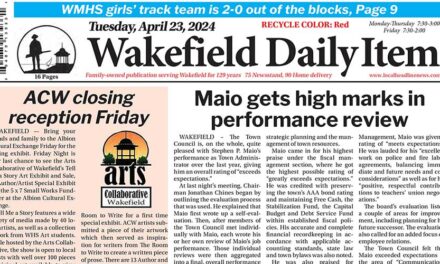Published in the August 15, 2016 edition
WAKEFIELD — Friday a sign across Main Street from the Galvin Middle School urged people to take care during this extremely dry period.
The northeast part of the state has not received significant rain for several months and it is starting to take its toll on just about everything.
Unwatered grass is long gone. Backyard blueberry bushes have dried up. Azaleas are wilting. Crystal Lake is at such a low point that the town is considering slowing the pumping of drinking water from it.
A drought warning has been issued for this part of the state and the DPW is asking for your assistance in helping to conserve water in these current conditions.
There have been five continuous months of unusually dry weather in Massachusetts.
Energy and Environmental Affairs (EEA) Secretary Matthew Beaton declared the drought watch for northeast Massachusetts, the result of a recommendation issued from recent meetings of the Drought Management Task Force, comprised of state, federal and local officials. It will remain in effect until water levels return to normal in affected regions.
It has since been upgraded to a drought warning.
“Drought conditions can contribute to lasting agricultural, environmental and economic impacts and also raise serious public safety concerns,” said Beaton. “This drought declaration is an important tool which will help officials on all levels of government to work together to ensure we take actions where necessary and we advise all residents to conserve water and take increased care with any outdoor burning such as campfires and disposal of smoking materials.”
Dry conditions present the potential threat of wildfires.
The decline of the state’s rainfall in the northeast region of Massachusetts since March led to the drought condition, with cumulative precipitation deficits of four to five inches below normal for the months of April, May and June. For the months of May and June, precipitation was less that 61 percent of normal in the regions under Drought Watch and Advisory.
Data from the state’s groundwater, streamflow and reservoir monitoring network show very low levels for the beginning of July. Seventeen streams across the four regions impacted by the drought have registered record-low flows for early July.
The Department of Public Works would like to thank you in advance for your cooperation in conserving water.




